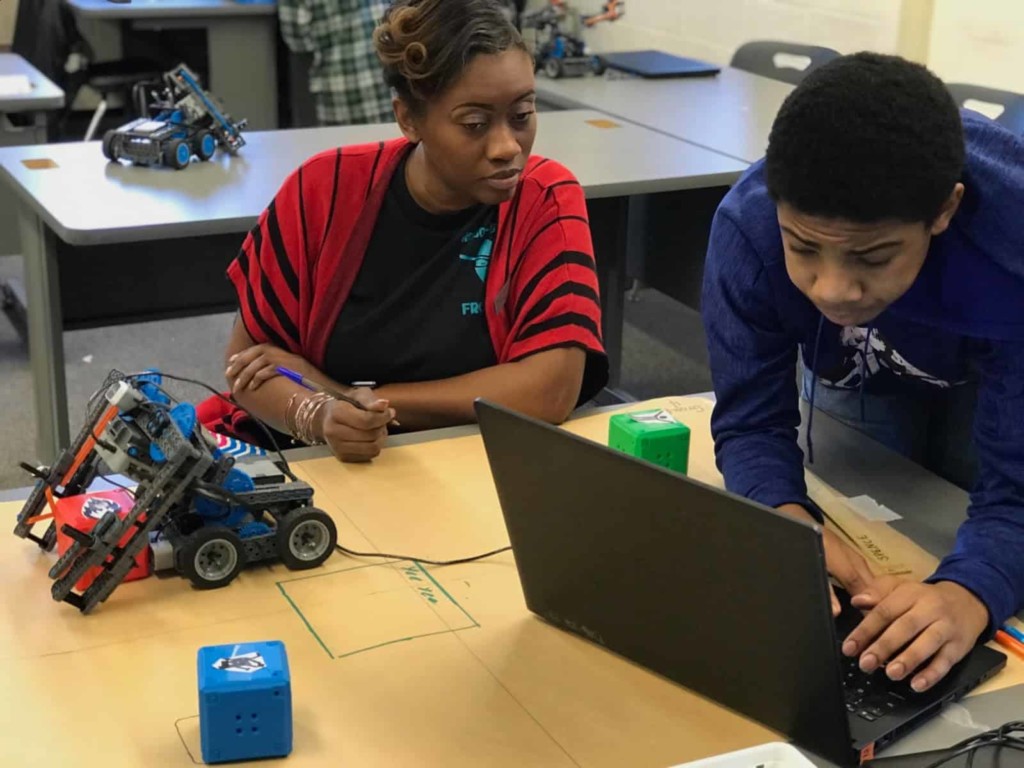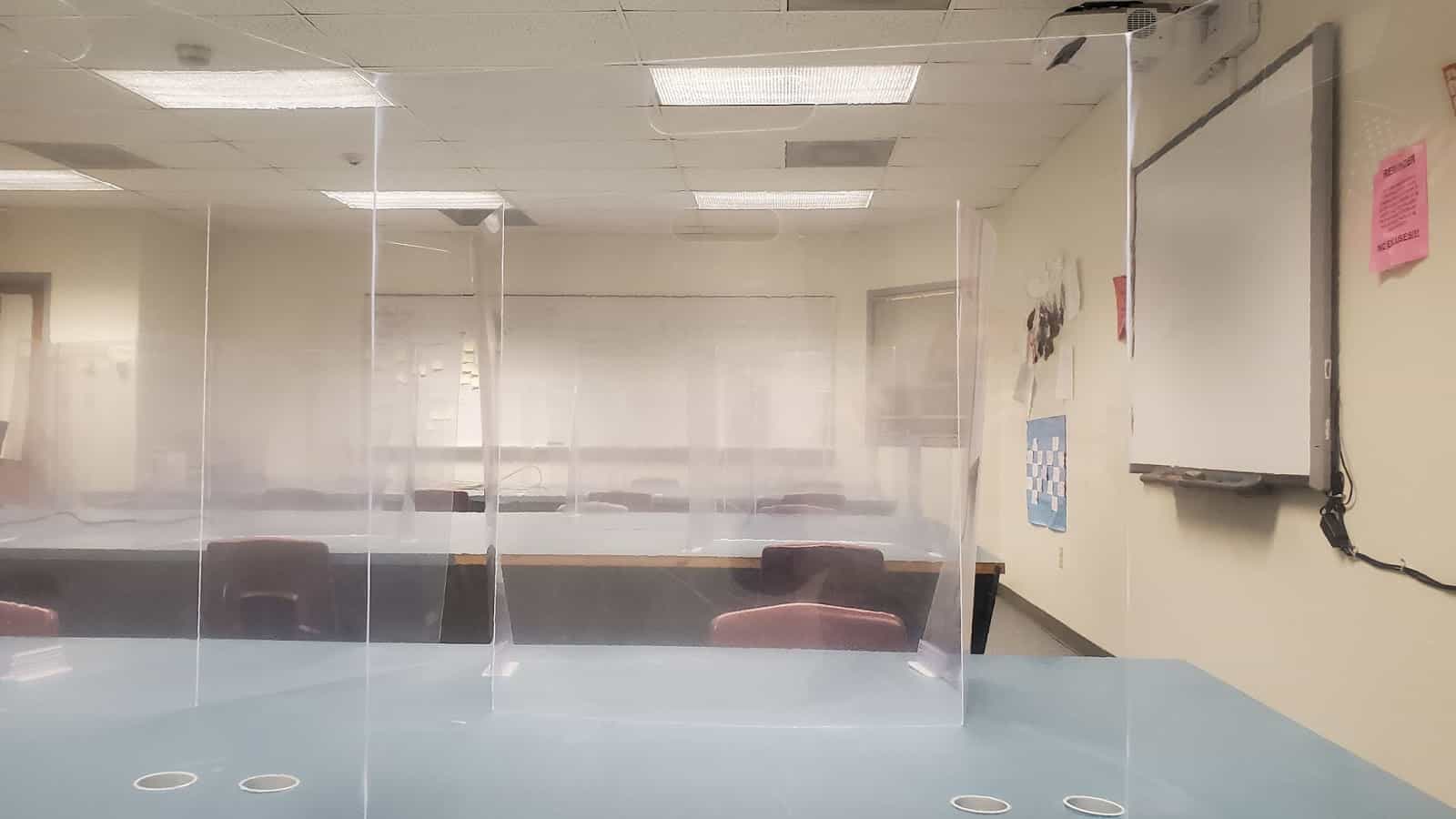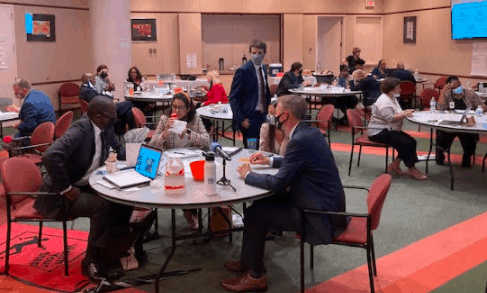The 5 Steps of Design Thinking Help Drive School Improvements

By: Ben Owens
Can you be an educator and not be committed to continuous improvement? Probably not. Whether it’s improving a lesson, a school policy, or a 5-year strategic plan, educators constantly work to better meet the needs of their students. Unfortunately, despite good intentions, too many of these improvements fall short of intended results. While reasons vary, a big one is a failure to use a systemic process to drive such improvement efforts.
To be clear, this is not a problem unique to education. Having spent a career in engineering before becoming a teacher, I saw too many cases of “solutionitus,” where colleagues would rush to make changes without following a methodical problem solving process.
The good news is that there are numerous improvement tools that are equally applicable in and out of education. These include Plan, Do, Study, Act; Engineering Design, and 5-Why. One of the most powerful, however, is Design Thinking.
Design Thinking forces us to understand and define a problem from the perspective of the user. From there, it allows you to conceptualize human-centered solutions, develop workable prototypes, and then test for effectiveness. Rinse, repeat.
One of the most accepted Design Thinking models is that of the Stanford d.school, and its five steps of empathy, define, ideate, prototype, and test. I will briefly highlight each step, including examples of how they can be applied in an education context.
“Good design, when it’s done well, becomes invisible.” This quote, by Jared Spool, a design expert and educator, makes sense if you have ever experienced a bad design – something that is almost always caused by a failure to empathize with the ultimate user. Parents who struggle to find the information they need on a district’s new LMS is an unfortunate example where the system’s designers did not adequately consider the user perspective.
An empathy map is a great tool to help a design team use observations, surveys, focus groups, etc. to understand what the user is saying, thinking, feeling, and doing relative to the problem at hand. Ryan Schultz, a Blended Learning Coordinator at the Poudre School District’s Futures Lab (CO), used this process as part of his efforts to set up his hybrid classroom. By actually sitting with a student at his desk, Schultz could quickly see how the room’s plexiglass dividers were not allowing students to see the information they needed. This empathy focus led to physical improvements that enhanced the student learning experience.

The design team’s next step is to analyze and synthesize the empathy data to define the problem from the point of view of the user. This definition should not be so broad that it’s impossible to solve, but also not so narrow that it limits innovation. One useful template that can help is a “How Might We” statement: How might we (action-oriented experience) for (our primary user) so that (desired outcome).
Diana Siliezar-Shields, a Science Curriculum Leader at Barrington Public Schools (RI) worked with her colleagues Laura Donegan and Kara West to co-design an Environmental Impact Project that emphasized the importance of problem definition. The project gave the students significant voice and choice in terms of the topic and the presentation method, but as this example shows, they also had to define the problem per the intended audience and defend that definition with evidence.
The time invested in the Empathy and Define steps allows the team to “go slow so we can go fast.” These steps provide the foundation for the ideation stage (aka brainstorming) and prevent the team from jumping straight to solutions for problems that don’t exist.
We have all been part of brainstorming sessions, but doing them well requires establishing some basic norms, such as these from IDEO U. One often overlooked norm is “quantity over quality,” where you want to encourage prolific, “out of the box” thinking and not filter ideas before they see the light of day. One Stone, a student-led school in Boise ID, takes this seriously, stressing that the best ideas come after the 50th idea!
After the divergent thinking of ideation comes prototyping where the team uses convergent thinking with analysis, synthesis, and the prioritization of big ideas based on potential benefit and feasibility. This leads to one or more prototypes, or what is sometimes called the “minimum viable product (MVP)” for your potential solution. Simply put, it’s a scaled-back version of the ultimate solution that is relatively easy to try out with users.
Peter McFarland, another Science Curriculum Leader at Barrington, uses prototyping as an integral part of his Earthquake Proof Building Project. Students assume roles of architects, engineers, and managers to develop prototypes that are tested and refined opposite design constraints. With the testing, they are also moving into the fifth and final stage of the process.
Testing is where the design team validates that their solution(s) indeed address user needs and solve the defined problem. Authentic improvement, therefore, is validated via user feedback. But even if not successful, the feedback allows the team to better empathize with users, refine the problem definition, and generate better solutions. It’s this iterative nature of Design Thinking that helps move it from being just a tool to a mindset that can drive a culture of continuous improvement.
Andrew Harris, the CEO of the Northeast Academy for Aerospace and Advanced Technologies in Elizabeth City, NC points to Design Thinking in this manner by highlighting how in the early days of the pandemic, the school was able to quickly pivot to continue its environment of high quality Project Based Learning, even in a remote setting. “It was our culture of continuous improvement and design thinking that created the agility for us to respond in that manner,” Harris said.
And while each of the above examples highlight how Design Thinking can be effectively applied in a classroom or school context, it’s worth noting that its power also extends well into the realm of systemic and policy issues as well. For example, Liberatory Design and Equity Centered Community Design are two excellent resources that explicitly leverage the Design Thinking framework toward the critical issue of equity. In fact, these were resources that helped inform a design sprint that Adam Haigler (co-founder of Open Way Learning) and I recently had the privilege of conducting with members of the North Carolina Board of Education regarding their Equity & While Child Strategic Plan.

Given the amount of time and energy educators and education stakeholders spend on continuous improvement, it only makes sense that we find ways to improve how we improve. Design Thinking is such a way. How can you use a Design Thinking mindset to drive more meaningful innovation and continuous improvement for your students?
For more, see:
- Organizing a Modern Edtech Stack for Modern Pedagogy, Part II: The LMS
- What Does Your Ideal Learning Environment Look Like?
Ben Owens spent 11 years as a physics and mathematics teacher at a small, innovative public school of choice in rural Appalachia after a long career as an engineer. He now works as the co-founder of Open Way Learning, a nonprofit that helps schools create the local conditions for learner-centered innovation in their own communities. He is the co-author of Open Up, Education! How Open Way Learning Can Transform Schools.
Stay in-the-know with innovations in learning by signing up for the weekly Smart Update.






0 Comments
Leave a Comment
Your email address will not be published. All fields are required.